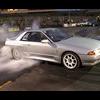R33 Gts-t Stalling Under Load
Announcements
-
Similar Content
-
Latest Posts
-
Surely, if you have the indicator in hand and a pair of verniers, you can measure it up and draw your own cut template? I mean, it's got to pretty clear what has to pass through the hole, what has to sit on the outside face of the hole, and what has to be able to pass through and perhaps clip into place on the back side.
-
Man, I hope this one gets finished i just randomly remembered it the other day and thought I’d check in.
-
Started sifting thru my brakes to decide which ones I will run on Clem Made me think I should just put them all on Silver...for when brake fade just isn't an option Should be able to bump rotor up from 343x32 to 348x36 off Supra. Not sure if the Supra annulus is right for the Alcons or APs but trying g to find a used Supra\M4 rotor to test fit The Alcons seem to gain 1-2mm clearance which all helps
-
So car is getting a few mods to the cage and some jacking points welded in Meantime Ol Silver gets a new gearbox and shiny clutch. Old Box is being set aside for Clem
-
By joshuaho96 · Posted
Probably speedometer itself if the odometer is ticking. If the needle is stuck from a bit of grease or something that can cause it to stay at 0. Or a cracked solder joint in the speedometer can do it too.
-





Recommended Posts